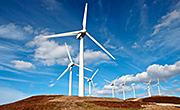
Review of EPA Authority for Upcoming Rules for Greenhouse Gas Emissions from Electric Power Plants
The Environmental Protection Agency ("EPA") has proposed regulations of carbon emissions from new fossil fuel-fired power plants under the authority of Section 111(b) of the Clean Air Act ("CAA"). The agency proposes one set of standards for gas-fired units and second pair of alternative standards for coal-fired units. Most new combined cycle gas-fired units already meet the proposed standard for gas-fired units. By contrast, neither recently built nor recently proposed coal-fired units can meet EPA's proposed standard without using carbon capture and sequestration, a technology that some electric utilities are likely to assert has not yet been deployed cost-effectively on a commercial basis. These new source performance standards apply from the date of publication of the proposal in the Federal Register, requiring proposed coal plants that have not commenced construction as of publication to meet the new performance standard.
President Obama also has directed EPA to issue emissions guidelines for existing sources under Section 111(d). EPA rarely uses this authority, and there are significant legal obstacles to the imposition of direct controls on existing sources. First, it is not at all clear that EPA has any authority under Section 111(d) to regulate electrical generating units. Specifically, conflicting statutory language in Section 111(d) disallows issuance of standards for sources in categories with already existing hazardous air pollutant standards, and electric generating units are such a category. EPA takes the position that the specific pollutant has to be regulated as part of the Section 112 category, which would allow simultaneous regulation of the sources. However, it is not clear that EPA's interpretation is consistent with the statutory language.
Even if Section 111(d) is available to regulate greenhouse gases from existing sources, the CAA leaves significant discretion to states to implement the guidelines issued by EPA. Many states already have programs in place to address greenhouse gas emissions, and these states will champion flexibility to keep their existing rules. Other states that do not currently have programs may also want to take advantage of the inherent flexibility in Section 111(d) to develop rules that best suit the state's particular circumstances. Together, the statutory language and state flexibility indicate a lengthy process for comprehensive regulation of greenhouse gases from existing sources.
This White Paper describes the operation of CAA Section 111 as a whole. Next, it explains the important aspects of two major provisions, Section 111(b) and Section 111(d), by explaining EPA's authority and responsibilities under the relevant provisions and related regulations. As this White Paper explains the statutory and regulatory mechanisms of Section 111, it also highlights portions of the regulatory process that are significant considering the proposed rule for new sources and President Obama's direction to develop regulations for existing sources.


